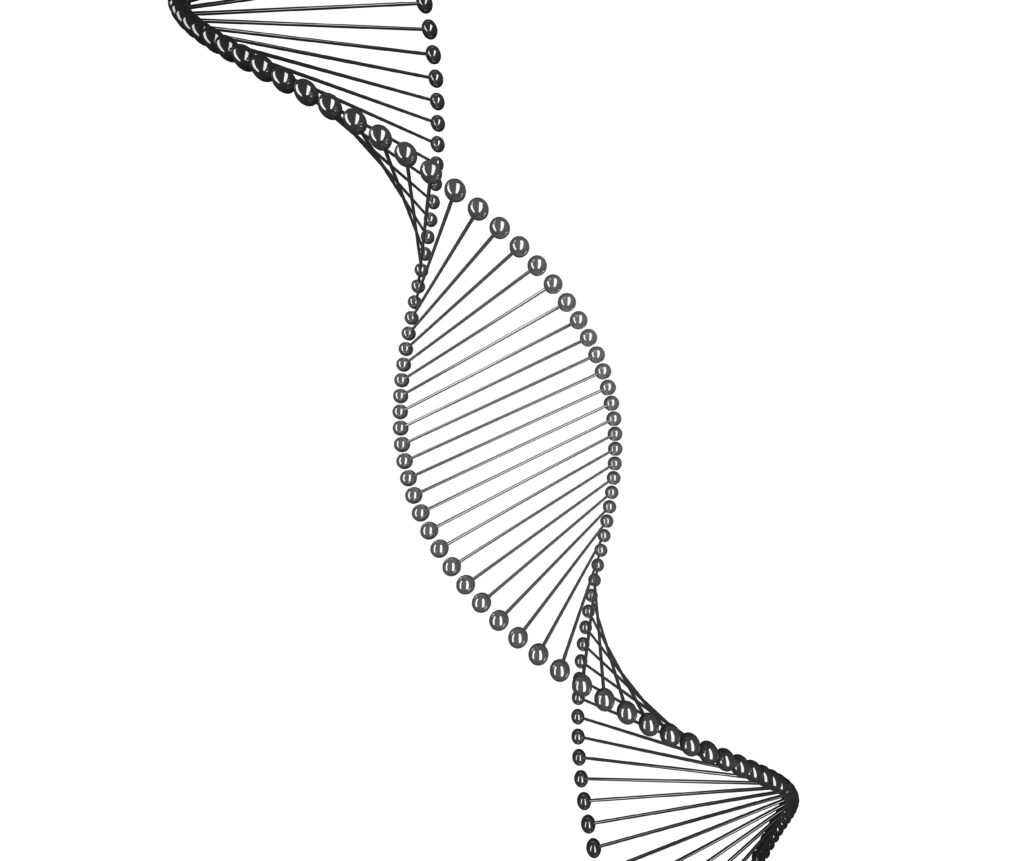Plasmids extracted by alkali lysis are separated according to the topological differences between covalently closed circular plasmid DNA and linear chromosome DNA. Within the narrow pH range of 12.0 to 12.5, the linear DNA double helix is unwound and denatured. Although the hydrogen bonds of covalent closed-loop plasmid DNA are broken under these conditions, the two complementary strands wrap around each other and remain tightly bound. When joining pH4.8 acetic acid potassium salt buffer restore Ph to neutral, covalently closed circular plasmid DNA of two complementary strand remain together, so the renaturation quickly and accurately, in which the linear chromosomal DNA of two complementary strand has completely separated from each other, refinement and it won’t be so quickly and accurately, they winding form a mesh structure, by centrifugation, Chromosomal DNA precipitates along with unstable macromolecular RNA and protein-SDS complexes and is removed.
[Laboratory Instruments and Equipment]
- Constant temperature incubator
- Constant temperature shaker
- Table centrifuge (maximum speed 4000RPM)
- Freeze high-speed centrifuges
- Autoclave pot
- Ultra-clean workbench
- Micropipette
- Eppendorftupe, TIP
[Experimental materials]
- The glucose
- Tris
- Ethylenediamine tetraacetic acid (EDTA)
- Sodium hydroxide
- Sodium dodecyl sulfate (SDS)
- Potassium acetate
- Ice acetic acid
- Chloroform
- The ethanol
- Pancreatic RNA enzymes
- Ampicillin
- The sugar
- Bromophenol blue
- Phenol
- β mercaptoethanol
- Hydrochloric acid
- E. coli containing pUC18 plasmid
Attachment: preparation of reagents
1.The solution Ⅰ
50 tendency/L glucose
5mmol/L Tris Tris·HCl(pH8.0)
10mmol/L ethylenediamine tetraacetic acid (EDTA)(pH8.0)
2.Solution Ⅱ
0.4mol/L NaOH,2%SDS, constant volume mixture before use
3.The solution Ⅲ
5mmol/L Potassium acetate 60ml
Ice acetic acid 11.5 ml
Water 28.5 ml
4.TE buffer
10 tendency, Tris HCl, L
1 tendency for l EDTA (pH8.0)
5.70% ethanol (put in -20℃ refrigerator, immediately put back after use)
6.The pancreatic RNA enzymes
The RNA enzyme was dissolved in 10mmol/L Tris·HCl(pH7.5) and 15mmol/L NaCl to a concentration of 10mg/ mL, heated at 100℃ for 15min, slowly cooled to room temperature, and stored at -20℃.
7.Termination liquid :40% sucrose, 0.25% bromocyanol
8.Phenol
[Experimental procedure]
(1) Plasmid extraction
- 2ml LB liquid medium containing the corresponding antibiotics was added into the test tube, and the plasmid-containing EScherichia coli was inserted, and the culture was shaken overnight at 37℃.
- 1.5 mL culture was poured into a microcentrifuge tube at 4000rpm and centrifuged for 2min.
- Suck up the culture medium and make the cell precipitation as dry as possible.
- Suspend the bacterial precipitate in 100μ L solution ⅰ, mix well, and stand at room temperature for 10min.
- Add 200μ L solution ⅱ (fresh preparation), mix the contents, and put the centrifuge tube on ice for 5min.
- Add 150μ L solution ⅲ (precooling on ice), cover tube tightly, turn upside down several times to mix well.
- 1200 RPM, centrifuged for 15min, and transferred the supernatant to another centrifugal tube.
- Add equal volume of phenol: chloroform (protein removal) into the supernatant, mix it repeatedly, centrifuge it at 12000rpm for 5min, transfer the supernatant to another centrifugal tube.
- Add two times the volume of ethanol, mix well, and leave at room temperature for 5-10 minutes. Centrifugation at 12000rpm for 5min. Pour off the supernatant, place the tube upside down on the blotting paper and drain the liquid.
- Wash plasmid DNA precipitate with 1ml70% ethanol, shake and centrifuge, pour supernatant, vacuum or dry in air.
- Add 50μL TE buffer containing 20μg/ mL pancreatic RNase to dissolve DNA completely and store at -20℃.
DNA was detected by agarose gel electrophoresis
Agarose gel electrophoresis is a common method for the isolation, identification and purification of DNA fragments. DNA molecules have charge effect and molecular sieve effect when swimming in agarose gel. DNA molecules have negative charge in pH solution higher than isoelectric point and move to positive pole in electric field. Because of the structural repetition of the glyophosphate skeleton, the same amount of double-stranded DNA has almost the same net charge, so they can move toward the positive pole at the same speed. Different concentrations of agarose gels can separate DNA fragments ranging from 200bp to 50kb. A 10ng band of DNA can be detected under ultraviolet light. The negatively charged DNA in the gel migrates to the anode under an electric field, pH8.0.
Agarose gel has the following characteristics:
(1) The migration rate of DNA molecule size in gel matrix is inversely proportional to the common log value of the number of base pairs, and the larger the molecule, the slower the migration.
(2) Agarose concentration THE migration rate of a linear DNA molecule of a given size varies in different concentrations of agarose gels. The logarithm of DNA electrophoretic mobility (u) is linearly related to gel concentration (t).
(3) At low voltage, the migration rate of linear DNA fragments is proportional to the applied voltage. However, with the increase of electric field intensity, the mobility of DNA fragments with different molecular weight will increase in different amplitude, and with the increase of voltage, the effective separation range of agarose gel will be reduced. To maximize the resolution of DNA fragments larger than 2kb, the voltage applied should not exceed 5v/cm.
(4) Electrophoresis temperature The electrophoretic behavior of DNA in agarose gel electrophoresis is not significantly affected by the temperature at the time of electrophoresis. The relative migration rates of DNA fragments of different sizes do not change significantly between 4℃ and 30℃, but gels with concentration lower than 0.5% or low melting point are more fragile, and it is best to electrophoresis at 4℃.
(5) Embedded dye Fluorescent dye ethidium bromide is used to detect DNA in agarose gel. The dye is embedded between the stacked base pairs and elongates the linear and circular DNA with gaps, making it more rigid and reducing the linear mobility by 15%.
(6) The composition and ionic strength of electrophoretic buffer affect the electrophoretic mobility of DNA. In the absence of ions (for example, when the gel is wrongly prepared with distilled water, the conductivity is minimal and the DNA hardly moves. In the buffer with high ionic strength (for example, when 10× electrophoresis buffer is mistakenly added), the conductivity is very high and the heat is obviously generated. In serious cases, the gel may melt.
For natural double chains, several electrophoresis buffers are commonly used, such as TAE and TBE, which are generally prepared into concentrated mother liquor, stored at room temperature, and diluted when used.
[Laboratory Instruments and Equipment]
- Constant temperature incubator
- Agarose gel electrophoresis system
- Autoclave pot
- Ultraviolet transmitter
[Experimental materials]
- Tris
- The boric acid
- Ethylenediamine tetraacetic acid (EDTA)
- Bromophenol blue
- The sugar
- Agarose
- Ethidium bromide
- DNAmarker
- The DNA samples
[Experimental procedure]
1.Preparation of buffer solution
①5×TBE(5 times volume OF TBE storage solution)
With 1000 ml5 x TBE:
Tris54g
Boric acid is 27.5 g
0.5 mol/l EDTA 20 ml
Ph8.0
② Gel sample buffer (6×)
Bromophenol blue 0.25%
40% sucrose
③ Ethidium bromide solution (EB)0.5μg/ mL
2.Prepare agarose gel
The percentage of agarose in the gel is determined by the size of the DNA being separated. Please refer to the following table:
Effective separation range of agarose gel concentration linear DNA
5-0.3% of 60 KB
1-0.6% 20 KB
0.7% 0.8-10 KB
0.9% 0.5-7 KB
1.2% 0.4-6 KB
1.5% 0.2 4 KB
2.0% 0.1 3 KB
3.Preparation of rubber plate
(1) Seal the edge of the washed and dried glass plate (or the opening of the plastic plate prepared by the electrophoresis device) with autoclaving instruction tape to form an adhesive film (place the adhesive film on the horizontal position of the workbench and correct it with a level instrument).
(2) Prepare enough electrophoresis buffer (1×TBE) to fill the electrophoresis tank and prepare the gel. Accurately weighed agarose powder. The buffer should not exceed 50% of the volume of the cone or glass bottle. It is important to use the same batch of electrophoresis buffer in the tank and in the gel. Small differences in ionic strength or pH can form fronts in the gel, which can greatly affect the mobility of DNA fragments.
(3) Loosely wrap the neck of the conical bottle with a thick layer of paper. In glass bottles, loosen the cap. Heat suspension in a boiling water bath or microwave until agarose dissolves. Note: Agarose solution will overheat and burst into a boil if heated in the microwave for too long. The volume of the solution should be checked to see if it is reduced by evaporation during boiling and replenished with a buffer if necessary.
(4) Cool the solution to 60℃. Add ethidium bromide (10mg/ mL storage solution prepared with water) to a final concentration of 0.5ug/ mL, and mix thoroughly.
(5) A pipette is used to absorb a small amount of agarose solution to seal the edge of the glue mold. After solidification, a comb is placed 0.5-10mm away from the bottom plate, so that an intact sample adding hole can be formed after adding agarose. If the comb is too close to the glass plate, there is a risk that the hole bottom will break when the comb is pulled out, which will allow the sample to penetrate between the glass plates.
(6) Pour the remaining warm agarose solution into the plastic mold. The gel is between 3 and 5mm thick. Check for air bubbles under or between the teeth of the comb.
(7) After the gel is completely solidified (30-45 minutes at room temperature), carefully remove the comb and autoclave tape and put the gel into the electrophoresis tank.
Low melting point agarose gel and agarose gel concentration less than 0.5% should be cooled to 4℃ and electrophoresis in cold storage.
(8) Add a sufficient amount of electrophoresis buffer just below the surface of the gel about 1mm deep.
4.Add sample
After the DNA sample is mixed with the desired sample adding buffer, the mixture is slowly added to the sample tank using a micropipette. The gel is now immersed in the buffer. The maximum size of a sample is 20-30μ L, depending on the amount and size of DNA.
A DNA standard of known size should be added to both the left and right holes of the left gel. Determine the size of the unknown DNA. When measuring the size of unknown DNA, use the same sample buffer for all samples.
5.Electrophoresis
At low voltage, the migration rate of linear DNA fragments is proportional to the voltage, but when the electric field increases, the increase of DNA fragments with different molecular weight is different. Therefore, as the voltage increases, the effective separation range of agarose gel decreases. To obtain the maximum resolution of DNA fragments by electrophoresis, the electric field intensity should not be higher than 5V/cm. When bromophenol blue indicator moved to about 1-2cm away from the lower edge of the glue plate, electrophoresis was stopped.


